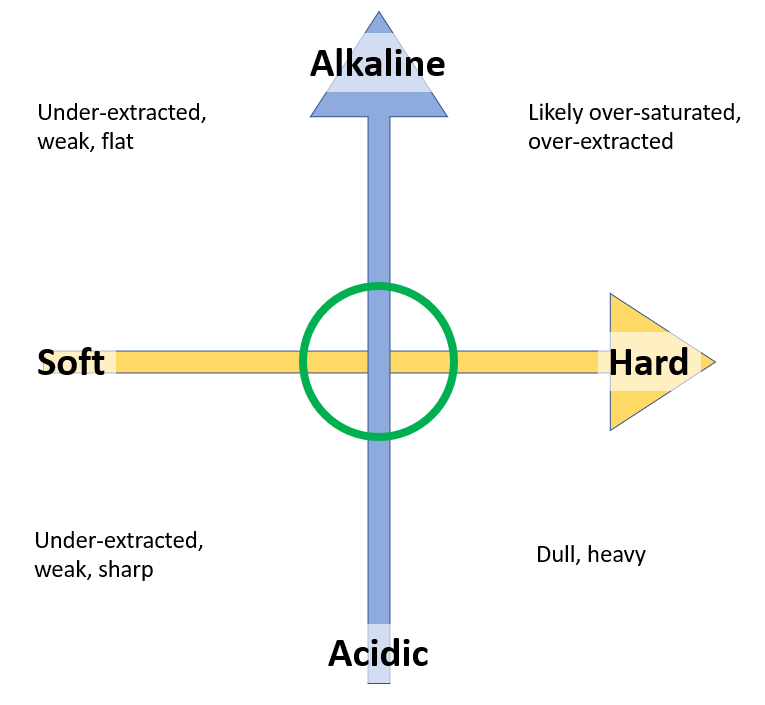Poor quality water can lead to scale, resulting in problems such as reduced boiler heating rate, reduced steam strength and reduced brew water flow rate. This means that it’s a really good idea to feed you Italian coffee machine with quality water to reduce the build up of water scale.
Here is a guide to water quality.
-
Standard drinking water filtration removes particles and chemicals but does not remove minerals that cause scale. Although standard filtration is not perfect, it is better than no filtration at all.
-
Some coffee machines have an in-tank filter option. In-tank filter cartridges remove some of the minerals that cause scale.
-
Rain water and bottled water are other options to consider for prevention of scale build up.
-
To prevent scale build up completely consider a professional water filtration system that removes particles, chemicals and minerals.
-
If you have high quality tap water you can use it. In fact, Most of my Melbourne-based customers use unfiltered tap water. However, it is important to note that this is at your own risk as water quality varies from location to location, and from home to home. Also note that these machines will need to be descaled periodically.
- Water that’s between 6.5 and 7.5 pH is typically best for brewing coffee. Water suppliers tend to keep water on the alkaline side. Acidic water is corrosive and can become dangerous to plumbing.

How often should I descale my coffee machine?
There’s no simple answer as descaling frequency will depend upon the quality of your tap water and the amount of water that runs through your machine.
Here’s a rough guide for an Italian coffee machine running unfiltered Melbourne tap water.
-
If you choose a DIY approach it is important to descale regularly, before thick scale can build up. A DIY descale every 2 years should do the trick.
-
If you choose to have your machine descaled professionally, a descale every 5 years should be all that you need to keep your machine healthy.
How do I de-scale my coffee machine?
If you decide on a DIY descale use only dedicated coffee machine descaling solution. I recommend Caffetto cleaning products. Do not use citric acid. The reason for this is that dedicated descaling solution will gradually dissolve scale whereas citric acid will dislodge slithers of scale. These slithers can then get pumped through the machine and cause blockages. The risk of scale slithers is the reason that some coffee machine manufacturers do not recommend descaling.
Remember that coffee machine warranties do not cover damage caused by scale build up or damaged caused by scale dislodged during descaling. Descale at your own risk. There are risks to DIY descaling but if you follow my advice you will reduce this risk. If you decide to descale your machine here are the steps to follow.
-
Turn the machine on and wait for it to heat up.
-
Fill the water reservoir with descaling solution.
-
Run pump to draw descaling solution from the water reservoir into the brew boiler or heat exchanger.
-
Open the hot water valve to draw descaling solution from the water reservoir into the steam boiler.
-
Leave for 2-3 hours
-
Fill the water reservoir with fresh water.
-
Run the brew pump to draw fresh water from the water reservoir into the brew boiler or heat exchanger.
-
Open the hot water valve to draw fresh water from the water reservoir into the machine's steam boiler.
-
Dilute the descaling solution by repeating Steps 6-8 several times.
-
All done. Time to enjoy a coffee.
If you are uncomfortable with the risk of DIY descaling you should first look at prevention. You can prevent scale build up by using filtered water, rainwater or bottled water. If you can’t prevent the scale from building up and you don’t want to try out DIY descaling you can take your machine to a coffee machine technician periodically for professional descaling and servicing.

